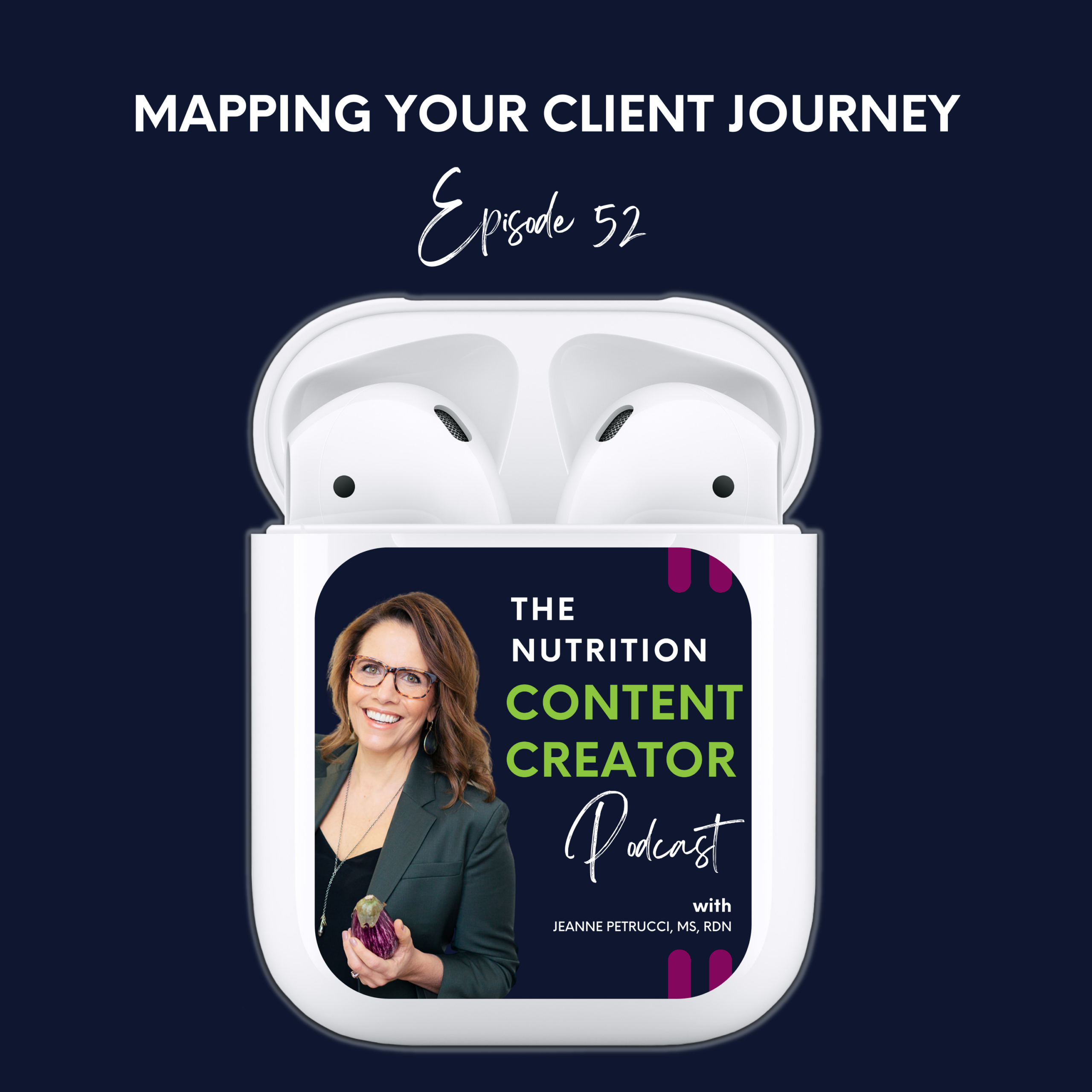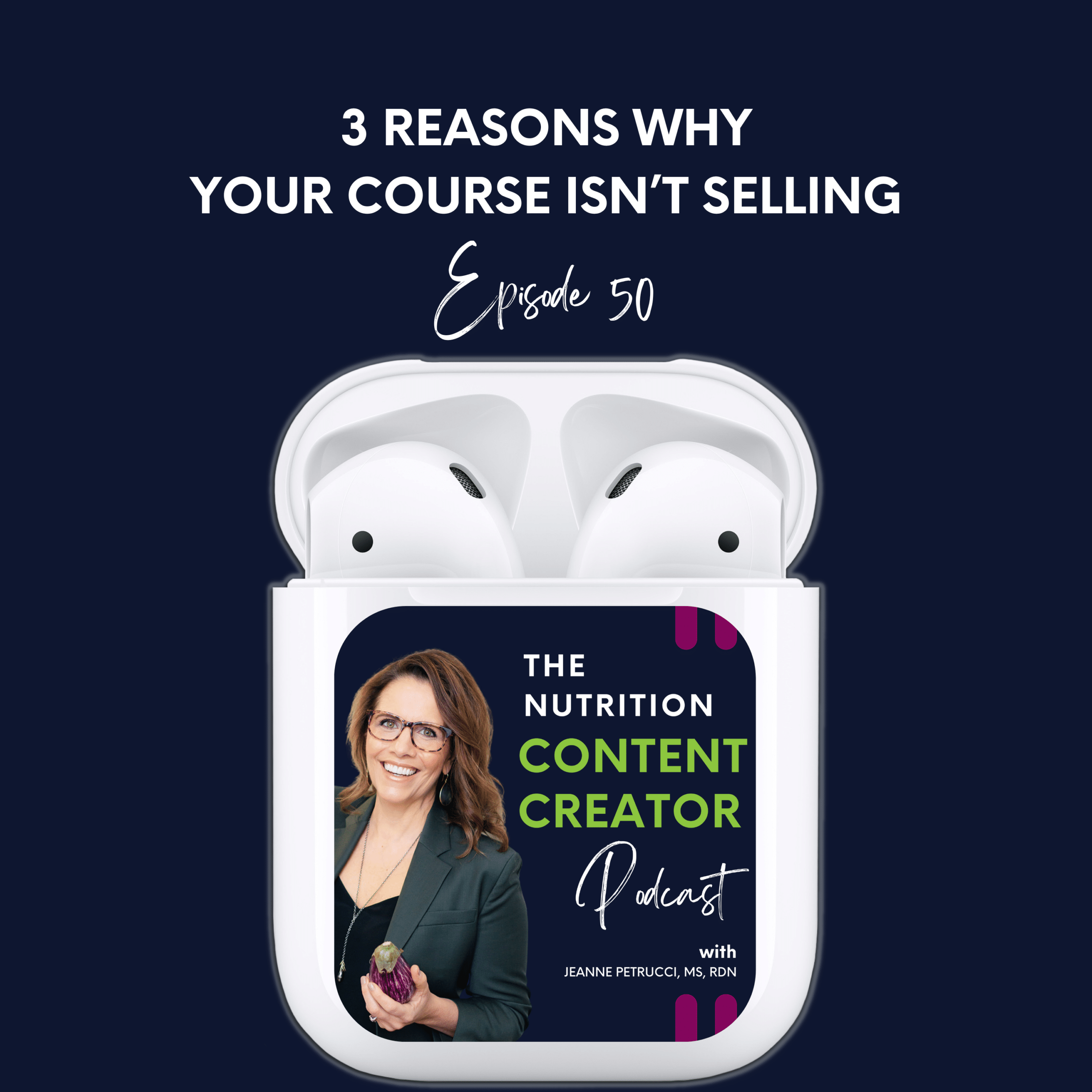5. Authenticity will trump a sales pitch, every single time

Some people think that being authentic is winging it or showing up without a plan, and that is simply just not true. You still need to be prepared to deliver your message. I believe you need to be even MORE prepared. You just do it in a way that represents your true self without any agenda. Today we’re diving into how you can authentically connect with your ideal clients.
In this episode, we cover:
- An ideal client’s craving for authenticity
- Reasons why a sales pitch is our default
- Creating an authentic sales pitch with a six-step framework
- Putting the framework into practice with video sales letters (VSL)
An ideal client’s craving for authenticity
In this world of constant noise where everyone is vying for attention, it’s easy to feel like you’re getting lost in the shuffle. Your ideal clients are constantly being wooed by empty promises from your competitors. Flashy sales pages and Facebook ads promising them the moon. But here’s the truth. What matters and what they crave more than anything is authenticity.
And authenticity trumps a perfectly crafted sales pitch every single time.
I recently returned from a conference where I was surrounded by my ideal clients and colleagues who share my passion for nutrition. I was there to make connections, but also to generate leads for my business. I was reminded from a previous conference what worked best to attract people to my booth and develop curiosity about my services. It wasn’t a perfect sales pitch or even a flashy giveaway. It was showing up authentically. Just speak from your heart, get to know our guests, and share what you know about how we can help them in their practices. If we do that, we can’t screw up. You might worry about not getting it right, but trust me, your audience values your authenticity more than any polished, rehearsed script. They will connect with you on a deeper level and trust that you are the person to solve their problems.
Creating an authentic sales pitch with a six-step framework
An authentic sales pitch focuses on your clients and their needs, rather than just promoting the features of your product or service. It’s about creating a narrative where your product or service naturally fits as a solution to the client’s problem. This approach tends to be more engaging and memorable for clients, leading to sales pitches that are not only authentic but effective.
A framework I use to support me with crafting authentic sales pitches for my brand is not my own – it belongs to Donald Miller, the author of Building a Brand Story. If you have not yet read this book, it’s mandatory. It has helped me so much in getting clear and comfortable with my messaging so I can stand before my ideal clients – either in person, virtually, and even through my sales page copy – and feel really good about “selling” in an authentic way [which eliminates the icky feeling we can get when selling.]
I know, you already LOVE that I am about to present a framework as this honors the perfectionist in you.
Having a framework created by an expert in messaging allows you to trust the process – believe me, on the other side of this you are going to feel so free to share your passion and desire to help people that you’ll forget you are selling.
Here is the basic framework Donald Miller offers to guide you in creating your brand story that takes your client [the hero of the story] on a journey to a solution to their problem. You are just the guide.
I’ll provide you with an explanation of the framework here, some samples, and the copy I created for my own brand as an example. Your Content Cure this week will be a worksheet to create your own – the link to download the worksheet is in the show notes.
The Problem
We’ve worked on this before in Episodes #1 and #3 – identifying your ICA and their problems. You already have a solid explanation of your ICA but here I want you to communicate it in a natural authentic way. Here’s an exercise – pretend you are at a social event and someone asks you what you do. You could say, “I am a Registered Dietitian”. True, but in saying that you are not providing context and you’re not highlighting the true “hero” of your brand, which is who you serve – your ICA.
Let’s say the hero of your story is a plant-based athlete looking to improve performance with their nutrition. Your response at that social event might sound something like this: “Some athletes choose to be plant-based but they really struggle with putting together a sustainable dietary plan that optimizes their performance…” Step one is complete – you have identified the hero of your story.
- Here is how my brand story fulfills the Problem step: “Most health and wellness professionals make nutrition recommendations as part of their care plans for clients but struggle to support their clients with the skills, tools, and knowledge they need to translate those recommendations into action.”
The Solution
Now, introduce your brand or service as the guide who can help the client (hero) solve their problem. You should be perceived as an authority but also empathetic to the client’s issue.
Let’s continue with our plant-based athlete: “… I [your brand] provide plant-based athletes with a framework for optimizing their nutrition so they can have better workouts, recover faster, and improve their overall performance – all without being overwhelmed in the kitchen.”
If the person you are speaking to is your ICA or knows someone who is, you have begun the selling process.
- Here is how my brand story fulfills this Solution step: “Living Plate Rx is Your Complete Nutrition Content Solution and grants you access to all of the dynamic, white-labeled, and editable content you need to serve your clients with integrity, get them the results they are looking for, and set your practice apart from the competition.”
Let’s put the sales pitch pieces for our plant-based athlete together:
“Some athletes choose to be plant-based but they really struggle with putting together a sustainable dietary plan that optimizes their performance. I [your brand] provide them with a framework for optimizing their nutrition so they can have better workouts, recover faster, and improve their overall performance – all without being overwhelmed in the kitchen.”
When you put Steps 1 and 2 together, you have your elevator pitch – in two sentences you have made it clear who you serve [hero] and how you serve them [guide] which supports you with now taking a deeper dive into the rest of your sales pitch. After crafting your elevator pitch, memorize it. Committing it to memory will prepare you for delivering it in an authentic way without actually reciting it word for word and will give you the flexibility you need to deliver it in different situations.
The Journey
As your client’s guide, you need to outline what it is like working with you – give them a simple map that they can envision following that will lead to the transformation they are looking for.
For our plant-based athlete, it might sound something like this [we will put them at the center of the story for this example]:
“First, book a free discovery call with me so we can chat about your personal goals and how we can work together to get you there.
Then, we’ll set up some counseling sessions, provide you with a simple personalized meal plan, and give you some resources to track your progress.
We continue to check in with each other twice per week to ensure you are on track to meet your personal performance goals.”
- Here is how my brand story fulfills this Journey step: “Just set up a Living Plate Rx account that gives you immediate access to customizable meal plans and a growing library of evidence-based materials to attract, serve, and retain your ideal clients. Then, you’ll brand and edit content to reflect your brand philosophy – creating custom meal plans, full social media calendars, practice materials, courses, presentations, and more. Finally, best of all, your clients become empowered with the skills, tools, and knowledge required to make your nutrition recommendations come to life – moving along with health behavior changes to achieve the transformation you are promising [making you look like a rockstar!]”
The Negative
Here you are going to describe what’s at stake if your client doesn’t take action to work with you. This can help to highlight the urgency and importance of the decision they’re about to make and it also reminds them, in an empathetic way, of the pain that they are in now.
It would sound something like this:
“Without support and a plan in place, you might continue to struggle with finding resources for becoming a high-performing, plant-based athlete – I know I did when I first got started.”
- Here is how my brand story fulfills this Negative step: “Without done-for-you content, you’ll be generating it all yourself – a situation that is not sustainable and leads to burnout. I know this because I tried. You’ll struggle with finding the time to create all the content your CLIENTS need to be successful and all the content YOU need to scale your practice.”
The Positive
Paint a picture of what success looks like for your clients after they’ve used your product or service. Show them the happy ending they can achieve if they take action. This taps into their aspirational desires.
It would sound something like this:
“With [your service], you will finally have a plan with the support you need to achieve your fitness goals while following a plant-based diet. You’ll have the direction and resources you need to maximize your workouts, accelerate your recovery, and get the results you want.”
- Here is how my brand story fulfills this Positive step: “With Living Plate Rx you’ll finally be set free from ever having to create content and meal plans from scratch again. You’ll have the time and energy needed to serve your clients, grow your practice, and have the life you want to live.”
The Action
You need to give your ideal clients directions with taking the next steps. This is where you provide a clear, compelling call to action. Whether it’s “Schedule Your Discovery Call Now” or “Sign Up”, it should motivate clients to move towards the resolution they desire.
It would sound something like this:
“Don’t waste any more time trying to figure out a plant-based diet for performance on your own – sign up for a discovery call and start getting the support of 1,000s of plant-based athletes just like you have already gotten.”
- Here is how my brand story fulfills this Positive step: “Don’t waste any more time struggling and trying to figure it out – join our community of more than 4,000 health and wellness professionals just like you and get the relief and support you deserve.”
Crafting authentic video sales letters (VSL)
Now let’s talk about putting this framework into practice. I do not doubt that by just completing steps one and two of the framework, you will feel comfortable delivering the beginning of your sales pitch authentically. The next step is to try and create a video sales letter or a VSL. This is a terrific way to practice the balance of your authentic pitch.
You can see an example of this, my video sales letter and how it plays out on the homepage of my website, livingplaterx.com. A video sales letter is a short video and is an effective way to promote your practice offerings you can’t physically be in front of your ideal client. Crafting an authentic video sales letter can be tricky.
You want to make sure that you come across as genuine, believable, and authentic, while also putting your best foot forward and highlighting the features of your product or service. We’ve all seen video sales letters where the person is delivering the sales pitch, reading a teleprompter. I know why they do this because I used to use a teleprompter. They do this because as perfectionists, they don’t want to screw up. They want to get it right the first time while this is admirable, nothing kills authenticity like reading from a script. You can sell and be authentic at the same time. It just takes practice and leaning a little bit into being vulnerable.
Content Cure for the Week
Let’s talk about your content cure for the week that will help you craft your first video sales newsletter. This week you are going to complete the framework for your authentic sales pitch.
>>CLICK HERE TO DOWNLOAD THIS WEEK’S CONTENT BUNDLE<<
Complete the worksheet. Then I want you to practice steps one and two until you can deliver them combined seamlessly without sounding scripted. Maybe practice with your family or create a short video just with these elements and use it as a real, or to kick off a live event. Repeat with the balance of the steps, committing each to memory and practicing them until you can deliver them from the heart.
When you’re ready, start videotaping yourself. Remember to look into the camera and don’t worry about retakes. Just tape in segments. Until you get the desired level of connection and authenticity without feeling like you’re reading from a script, then you can take your video clips and add them to video editing software or even Canva. Plug in some smart transitions, and there you have it, your first video sales letter. The key to delivering a pitch that oozes authenticity is to be prepared with the framework we reviewed, but deliver it from the heart. Look into the camera, be relaxed, be expressive, and maintain an empathetic tone. Now go create your video sales letter.
Key Takeaway
The key to delivering a pitch that oozes authenticity is to be prepared with the framework we reviewed but deliver it from the heart. Look into the camera, be relaxed, be expressive, and maintain an empathetic tone.

Jeanne Petrucci MS RDN
Founder, Expert Nutrition Content Creator


